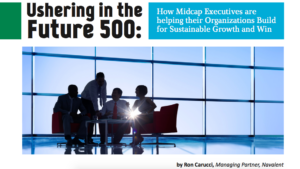
With Exceptional Attention to Detail
Do your customers know how important they are to you? And when I use the word customer I’m talking about your clients, your patients, your members, your students, your team members, whatever you call them, let’s use the word customers today. How are you paying professional attention to your customers, whoever they might be?
I want to share with you what I call BDA, which is just a fancy name, or process, for before, during, and after. When it comes to truly paying professional attention, and committing to our customers, I want to share with you an experience I had, and a great example of an organization, or really a hotel, that demonstrates what I call intentional attention through their BDA process.
I wanted to surprise a dear friend and she lives in North Carolina, and so I had booked a weekend in New York as a surprise. Now, what happened was before I even got to New York I had the opportunity to go to their website, register all my details, but it was quite a fun check-in process. And one thing they asked about was there any special occasion? So of course, I mentioned my friend Leslie’s birthday. Then, I was thinking about what made it a really great attentive experience before I even got to the hotel. Well, their website’s well designed, there are so many great pictures. All my questions were answered, their registration process was simple. And I had done quite a bit of research on them through social media.
The Exceptional Customer Experience
I had heard about this unique property called the Library Hotel, and I had personal endorsements from others who’d stayed there. So, I want you to have a think about what are your customers telling others? What are people looking at when they view your social media accounts? Are they sharing and seeing what you stand for? And do you make it easy for your customers to do business with you?
There are some ideas before you even get that customer interaction. But let’s talk about what happened during my stay at the Library Hotel. It was a very hot summer day, we had both got into the city in very different ways, and we jumped in a cab to get to the hotel. It was a hot, sticky day. Imagine our delight when we were offered water by the attentive, kind staff who offered us water upon entering. We were early, so our room wasn’t ready for us at that time.
But, what was amazing was that they wished my friend a happy birthday as soon as she walked up to the counter, which is incredible, and they offered us a hospitality suite to be able to change so we could then go and enjoy a luncheon. Not only that, the hospitality suite was equipped with lovely complimentary drinks and snacks, and it was a gorgeous beautiful facility.
We told them a little bit about our day’s plans, a little bit of shopping in Soho, and then lunch at Balthazar. Now, Balthazar is one of my favorite French bistros in New York, and it is just a hustling and bustling very New York type place. I go there whenever I have a chance.
We had mentioned this as we jumped in our Uber to go out after leaving our luggage at the Library hotel. We had a lovely lunch and after returning from lots and lots of shopping, they told us our room as ready and they had sent our bags up to our room.
Now, here’s what’s interesting. When we got into our room there was a birthday card for Leslie, some little chocolates. There were two mugs with the Library Hotel so that we can enjoy them after we left. And I looked across the room and I saw a bundle of my most favorite champagne. How did they know? What was even more remarkable was when I found this. This is the cookbook for, you guessed it, Balthazar.
They had organized for a copy of this book, including a lovely handwritten note from the manager about our experience. Now, this is attention to detail! They gave us a beautiful room overlooking the New York Library – the hotel’s namesake.
Every room is on the Dewey Decimal System. Isn’t that interesting!? You might remember, if you’re as old as me, going to a library and pulling out the draws. And they had those little-indexed cards with the number and then you had to go find the book. I know, before the internet, I’m that old.
But the Library Hotel was a fantastic case study in how, from the moment we set foot on their property, they paid attention, the staff was trained, everyone was attentive. They listened to our conversation and added little tiny moments that would make us remember it for a lifetime. We had an amazing time at the Library Hotel.
Interesting. After we left, so remember BDA, before, during, and after, they also reached out to see how was our stay. They asked for feedback. We got lovely responses, and obviously, we shared our experience on social media. What are you doing for your customers to make them feel seen and heard, before they interact with you, during their interaction with you, and then after they leave you?
Create Your Exceptional Experience
We work hard to get customers to support our business. There are so many tools available for you to you to pay attention and commit to your customers. Your website, your marketing collaterals, your advertising, your social media, your staff training, your policies, your procedures. And the experience of your physical environment if you have one.
What are all the things you could be paying attention to? All those touch points that leave an impact on your customers? I want to challenge you today to have a look at one of these areas, before, during, or after. Think about what could you do differently and commit to your customers in an even deeper way.

















 No matter which side of the aisle you’re on, it seems that stopping things is the main focus of our representatives in Washington these days. Look, I’m not a political guy, but when it comes to leadership, shutting down the dialogue is the last thing you need. Seems to me that there’s a real misunderstanding going on.
No matter which side of the aisle you’re on, it seems that stopping things is the main focus of our representatives in Washington these days. Look, I’m not a political guy, but when it comes to leadership, shutting down the dialogue is the last thing you need. Seems to me that there’s a real misunderstanding going on.